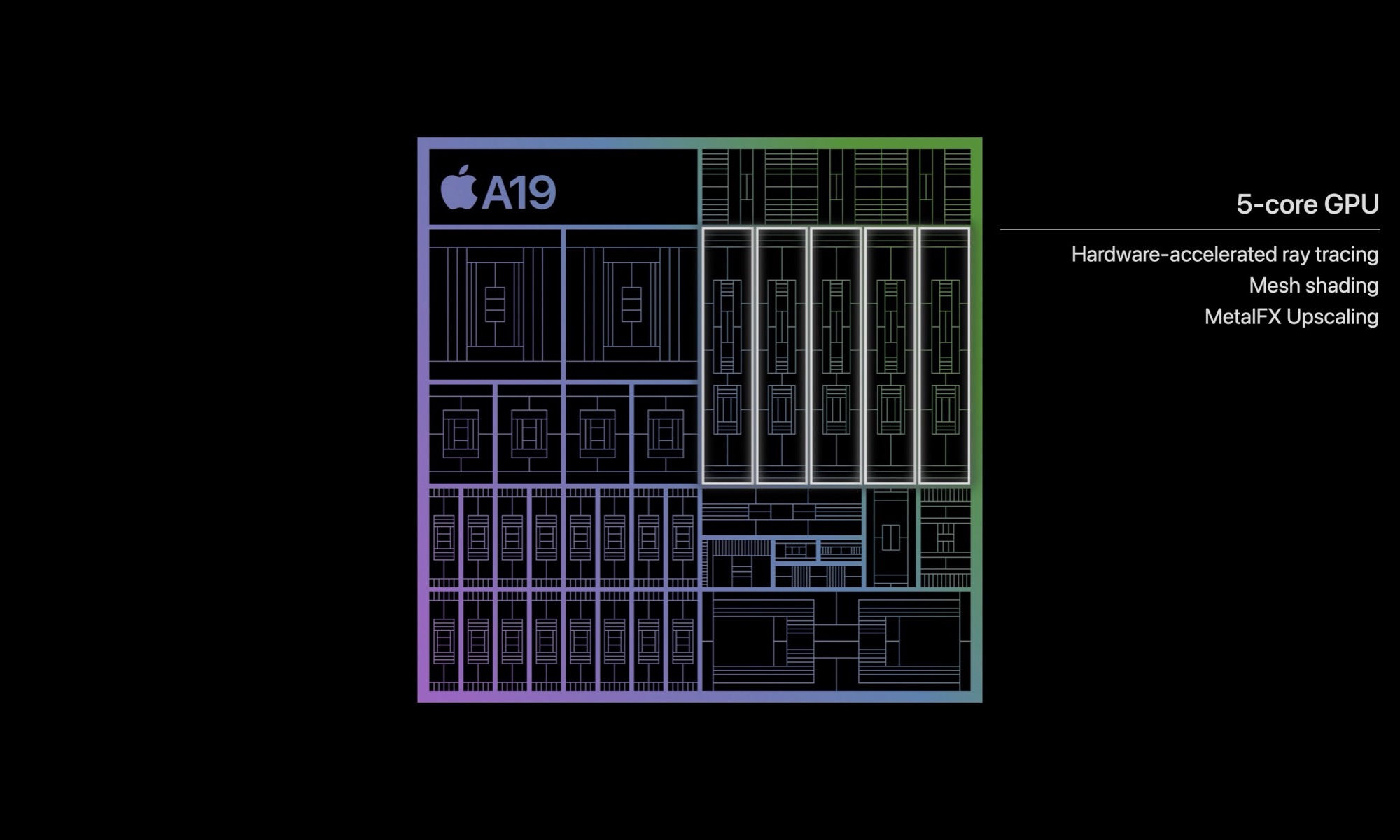iPhone 17 vs. iPhone Air: Is Thin In?

Toggle Dark Mode
Apple unveiled its new iPhone 17 lineup last week, surprising many users by adding a completely new model to the lineup: the iPhone Air.
At first glance, this ultra-thin device feels like the must-have iPhone of the year. However, once you take a second to think about it, you realize that the other iPhone 17 models might be a solid choice as well.
For instance, Apple also featured the standard iPhone 17, packed with similar new features, including amazing upgrades like ProMotion and the Always On display, for $200 less.
So, which model actually makes sense for most people? Is it worth paying more for a thinner, lighter device that makes a few compromises, or does the regular iPhone 17 remain the smarter choice?
To help you decide, let’s dig into the differences between the two devices to decide which iPhone is better for you.
iPhone 17 vs. iPhone Air: Design
The first thing you’ll notice is just how different these two phones look and feel. The standard iPhone 17 continues Apple’s traditional design, so don’t expect any exciting hardware changes.
The base iPhone is 5.89 inches tall and 2.81 inches wide, with a depth of 7.95 mm. Like previous iPhones, it feels solid without being too bulky. It’s also worth noting its weight. At 6.24 ounces, it’s light enough to carry comfortably, but it doesn’t compare to the iPhone Air, which we’ll discuss in just a second.
Just like in previous years, the base iPhone is the only one with a variety of colors to choose from. The iPhone 17 comes in Lavender, Sage, Mist Blue, White, and Black. These finishes keep things fresh in case you want to upgrade from an iPhone 16.
By contrast, the iPhone 17 Air is all about minimalism. Its frame is titanium, which instantly makes it feel more premium and more durable compared to the iPhone 17.
At 6.15 inches tall and 2.94 inches wide, it’s slightly larger overall, but its depth drops to an incredible 5.64 mm. That makes it the thinnest iPhone that Apple has ever produced — a difference that’s immediately apparent the moment you look at it or hold it.
As you can expect from an “Air” product, this new iPhone is also pretty light. Weighing just 5.82 ounces, it’s incredibly light for a device of its size.
Unlike the iPhone Plus in previous generations, Apple didn’t use the same color options for the iPhone Air. To make it stand out from the more affordable option and reflect its more elegant design, Apple went with Sky Blue, Light Gold, White, and Black.
Needless to say, if you’re all about the design or just want the feel of a really new iPhone in your hands, the iPhone Air is the obvious choice.
iPhone 17 vs. iPhone Air: Display
Both phones benefit from Apple’s most advanced screen technology yet, but subtle differences could make you decide which one is better for you.
The iPhone 17 sports a 6.3-inch Super Retina XDR display, protected by Ceramic Shield 2 glass on the front. For the first time in the non-Pro lineup, you also get ProMotion, Apple’s adaptive 120 Hz refresh rate system. This feature automatically adjusts your refresh rate based on your iPhone’s current activity.
Scrolling through apps feels smoother than ever, and even simple animations feel snappier. And thanks to ProMotion, the Always On display feature also arrives here, which lets you always see the time or other important information on your screen.
Nowadays, the screen brightness is also important, and the iPhone 17 reaches peak brightness that can hit up to 3,000 nits outdoors, which is perfect for sunny days.
The iPhone Air comes with a larger 6.5-inch Super Retina XDR display. The difference might not sound huge on paper, but in practice, it gives you just that bit more room for watching videos or reading.
The new Ceramic Shield 2 covers both the front and the back of the iPhone Air, making it a bit tougher against falls and scratches all around.
Like the iPhone 17, the new iPhone Air also supports ProMotion, Always On, and the same 3,000-nit peak brightness, so you won’t feel shortchanged in everyday use.
Ultimately, both displays are top-notch, but the Air’s larger screen might appeal if you consume a lot of media or just prefer a bigger screen without spending more money for the iPhone 17 Pro Max. On the other hand, the smaller size of the iPhone 17 makes it easier to use with just one hand, which could be a better option for some users.
iPhone 17 vs. iPhone Air: Camera
Cameras remain one of the most significant factors when choosing between different iPhone models, and here the differences are more noticeable, albeit slight.
On the front, both devices share an 18-megapixel Center Stage camera. This means your selfies and video calls are high quality, stabilized, and benefit from Apple’s Dual Capture feature, which lets you record with the front and back cameras at the same time. Center Stage is particularly handy in video calls, automatically adjusting the frame to keep you centered even if you move.
The standard iPhone 17 brings the same dual-camera setup as its predecessor. On the back, you’ll find a 48-megapixel Fusion main camera, but this year it’s paired with a higher-resolution 48-megapixel Fusion Ultra Wide lens. This gives you three optical zooms: 0.5x for ultra-wide shots, 1x for the main lens, and 2x zoom. You can also delve into macro photography using the Ultra Wide lens, capturing tiny details such as the texture of a flower petal or the grain in wood. The video performance remains the same as last year’s model, with the capability of shooting Dolby Vision HDR recordings up to 4K at 60 frames per second.
The Air takes a different approach, featuring a single camera system on the back, which we haven’t seen on a mainstream iPhone since the iPhone 8. Of course, that doesn’t mean it’s bad, as it’s still a 48-megapixel Fusion camera. It’s also more versatile than the single camera found on Apple’s budget iPhone 16e.
This means that you still get high-quality shots, stabilized video, and Dolby Vision HDR at 4K quality, but you lose the Ultra Wide lens and therefore the ability to shoot macro photography. Optical zoom is limited to 1x and 2x, which covers most casual use but feels restrictive compared to the flexibility of the iPhone 17.
Apple clearly designed the iPhone Air for users who take plenty of everyday photos but don’t need professional-level versatility. If wide-angle landscapes or macro detail shots are part of your creative process, the iPhone 17 is the better fit. If you’re mostly snapping casual portraits or photos, the iPhone Air’s single lens won’t hold you back.
iPhone 17 vs. iPhone Air: Performance
Performance is where both phones excel, though the iPhone Air edges ahead with a slight advantage.
Both feature a 6-core CPU, a 5-core GPU, and a 16-core Neural Engine, ensuring smooth performance across everything from gaming to photo editing. Where things diverge is the processor.
The iPhone 17 runs on the A19 chip, which is itself blazing fast and perfectly capable of handling iOS 26, AAA games, future software updates, and any new Apple Intelligence features Apple throws its way.
However, the iPhone Air steps up to the A19 Pro, a chip designed for more intensive workloads, and matches its performance to that of the iPhone 17 Pro models, at least on paper.
The A19 Pro delivers better graphics performance, which makes a noticeable difference if you’re into gaming or demanding applications. It also provides extra headroom for Apple Intelligence features, which are increasingly reliant on neural processing.
In practice, the difference between the A19 and A19 Pro may not matter much for casual users. Apps open instantly on both, and you won’t notice any performance gap in everyday use.
But when future software updates come, particularly with new Apple Intelligence features, the iPhone Air’s A19 Pro chip will definitely age better. If you keep your phone for five or six years, the Pro processor could help it feel fast for longer.
iPhone 17 vs. iPhone Air: Battery Life
Despite the larger body, the iPhone Air may have a slight compromise in battery life, at least on paper.
Apple never discloses exact battery capacities, but the company has confirmed on its website that the iPhone 17 can handle up to 30 hours of video playback on a single charge, which is almost as much as the iPhone 16 Pro Max from last year.
The iPhone Air, by comparison, only lasts up to 27 hours. That’s still impressive for such a thin device, but it serves as a reminder that a slimmer body often means less room for a battery. If you’re one of those heavy users who spend all day streaming, gaming, or working without easy access to charging, those extra three hours on the iPhone 17 could make a world of difference. For lighter or average use, both phones easily last a full day and into the next.
iPhone 17 vs. iPhone Air: Price
Pricing may be the most noticeable difference, and the reason why many people will choose one over the other.
The iPhone 17 starts at $799 for the 256 GB model and goes up to $999 for the 512 GB model. That makes it a relatively affordable entry point for a flagship phone in 2025, especially considering it finally gets features like ProMotion and Always On that were previously reserved for Pro models.
The iPhone Air, however, starts at $999 for the 256 GB model and climbs to $1,399 for 1 TB of storage. You’re paying at least $200 more for the thinner titanium design, the A19 Pro chip, and the prestige of carrying Apple’s slimmest iPhone ever.
Both devices are definitely not cheap, by any means, but you’ll probably want to get the iPhone Air if you value a new iPhone design over everything else.
iPhone 17 vs. iPhone Air: Which One Should You Get?
Deciding between the iPhone 17 and the iPhone 17 Air ultimately comes down to priorities. If you want the most balanced device for everyday use, the iPhone 17 is hard to beat. It gives you a dual-camera system with Ultra Wide and macro photography, slightly longer battery life, and a more affordable entry point.
Its aluminum frame is tough, and the variety of colors makes it easier to find the one you really like.
The iPhone Air, on the other hand, is for those who want something more distinctive. The titanium frame, ultra-thin body, and lighter weight make it feel luxurious in a way the iPhone 17 just can’t match. The A19 Pro chip ensures it’s not just pretty but also powerful, with performance that could age better as Apple Intelligence becomes more prevalent.
With that said, the compromises — the single camera system and a less powerful battery — are worth it if you prioritize design, portability, and, let’s be honest, bragging rights.
Ultimately, even if it’s an “outdated” body, the iPhone 17 is the best choice for most of us. You get almost the same performance and screen quality while also spending $200 less. That’s the same price as last year’s iPhone 16, with twice the storage, a 120 Hz ProMotion display, and a new 48 MP Fusion Ultra Wide camera.
Which New iPhone Are You Buying?
Apple’s decision to create a new and more expensive Air model feels like a bold experiment, much like the introduction of the MacBook Air was nearly two decades ago.
And even though people questioned back then whether thinness was worth paying extra for, this MacBook quickly became one of Apple’s most iconic computers.
Whether the iPhone Air follows that same path remains to be seen. For now, it’s a stylish option that redefines what a premium iPhone can look like. If you’re shopping in 2025, the choice boils down to whether you want a more expensive device that feels more premium, or if you’re more comfortable with the regular iPhone, which is still better — and more affordable — on paper. Either way, you’re getting one of the most powerful and capable devices Apple has ever made.














